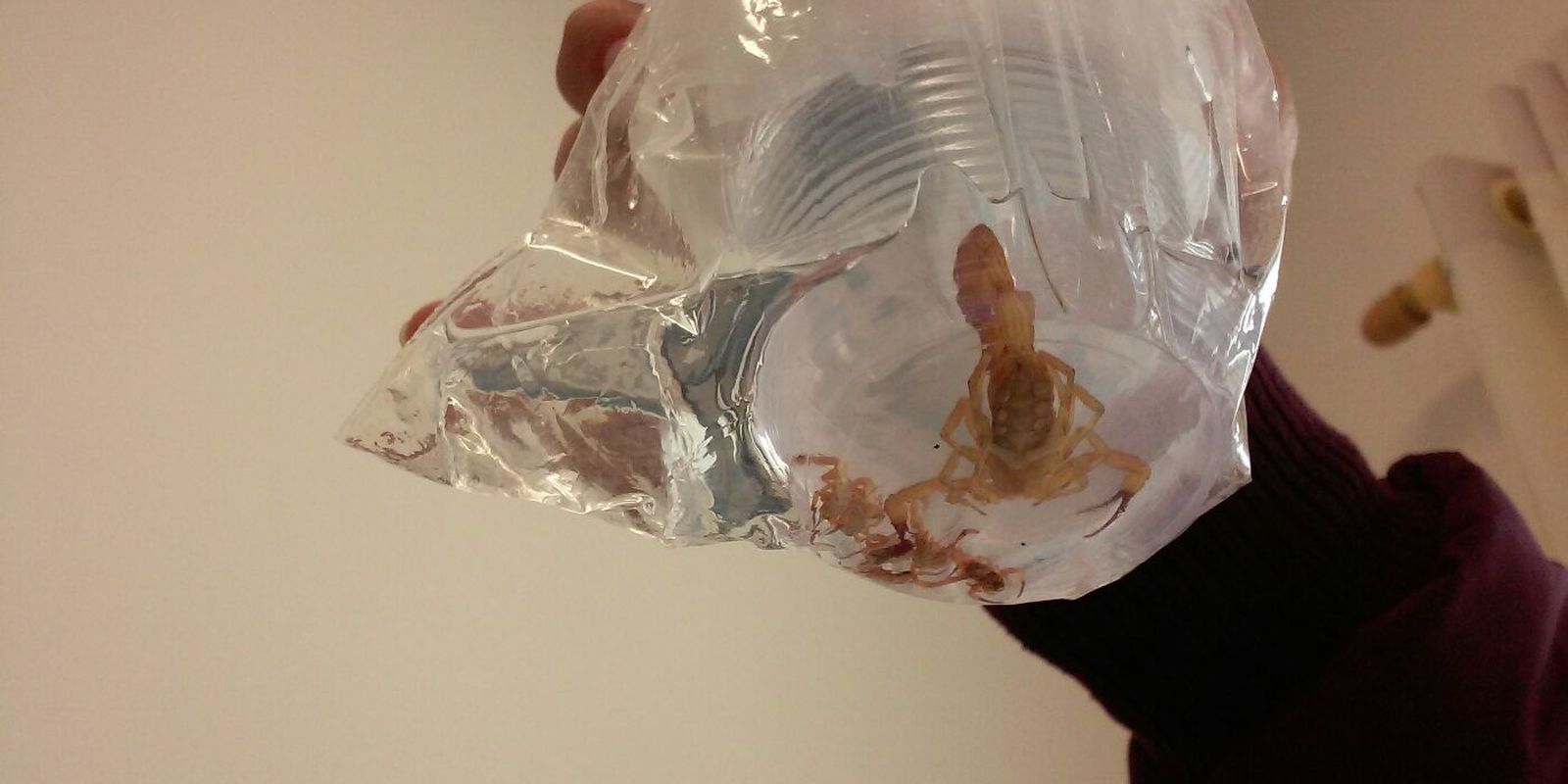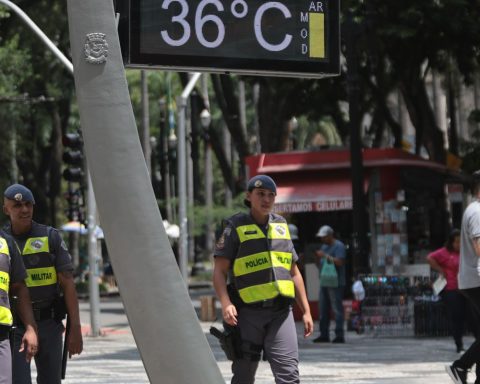This week, journalist Ariane Póvoa, 40 years old, faced one of the biggest fears that every mother of a young child has: she had to rush with her daughter Amanda, aged 1 year and 4 months, to the hospital, after checking that the girl had been Stung by a scorpion while still in her crib. “She woke up crying a lot, but at the time, I didn’t understand what it was. I thought it was a tooth coming in. She started saying ‘do-dói’ and pointing to her arm. When I went to fix the crib, I found the scorpion.”
“Thank God, it was a light condition. She was fine, but felt pain at the site of the bite,” said Ariane. Before getting care for her daughter, Ariane went to a public health unit considered a reference for scorpion accidents in Brasília. The location, however, does not offer pediatric care. “That day alone, there were three cases of scorpion stings in children at the Maternal and Child Hospital, where we received care.”
Because she lives in an apartment, the journalist never imagined she would go through something like this. The episode occurred around 5:30 am this Wednesday (6), and Amanda was discharged in the late afternoon. “She did not experience nausea, vomiting, chills, or sweating, but, as is protocol, she had to remain under observation for six hours,” he said. “During the night and this morning, she still had a fever and is a little more nauseous. We are monitoring with the pediatrician.”
Cases like Amanda’s are becoming increasingly common in Brazil. Data from the Ministry of Health shows that at least 202,324 reports of accidents involving scorpions were registered in the country over the past year – 20,243 more than the total recorded in the previous year. This is the first time that the total number of notifications has exceeded 200 thousand.
The number of deaths caused by scorpion stings also increased, from 92 in 2022 to 134 last year. Deaths caused by accidents with scorpions even surpassed deaths caused by snake bites, which totaled 133 last year.
Understand
The so-called scorpion accident represents the clinical picture of poisoning caused when a scorpion injects its venom through its stinger. Representatives of the arachnid class, scorpions are predominant in tropical and subtropical zones of the world, with a greater incidence in periods when there is an increase in temperature and humidity.
In Brazil, the scorpions classified by the ministry as being of public health importance are:
– yellow scorpion (T. serrulatus) – with wide distribution in all macro-regions of the country, it represents the species of greatest concern due to the greater potential severity of the poisoning and easy adaptation to the urban environment.
– brown scorpion (T. bahiensis) – found in the Central-West, Southeast and South regions.
– northeastern yellow scorpion (T. stigmurus) – most common species in the Northeast, but with some records in the following states: Tocantins, Minas Gerais, São Paulo, Paraná and Santa Catarina.
– Amazon black scorpion (T. obscurus) – main cause of accidents and deaths in the North region and Mato Grosso.
Profile of victims
Data from the folder show that the majority of cases occur in groups aged between 20 and 29 years old, followed by groups aged 40 to 49 years old, 30 to 39 years old and 50 to 59 years old. The least affected group is those aged 80 or over, followed by those aged 70 to 79.
The numbers indicate that 53% of victims of scorpion stings in 2023 were brown (53%), followed by white (30%), black (7%) and yellow (1%), and in 8% of cases it was not identified the patient’s race or color.
Distribution of cases
Among the country’s regions, the Southeast leads, with 93,369 accidents involving scorpions. Next are the Northeast, with 77,539; the Central-West, with 16,759; the South, with 7,573; and the North, with 7,084.
São Paulo leads among the states with the highest number of notifications (48,651), followed by Minas Gerais (38,827) and Bahia (22,614). Alagoas records the highest incidence rate in the country (376.02 for each group of 100 thousand people). Minas Gerais also has the highest fatality rate (0.17).
Data from the folder reveal that 65.92% of reports of accidents involving scorpions are made in urban areas; 30.43%, in rural areas; and 0.53%, in peri-urban areas, while in 3.12% of cases the information was ignored or not recorded.
Location and severity of the bite
Among the main bite sites, the foot appears first (22.56%). Next are fingers (22.28%), hand (18.32%), toes (9.38%), leg (5.63%), torso (5.38%), arm ( 4.57%), thigh (3.92%), head (2.64%) and forearm (2.47%). In 2.85% of cases, the location was not registered.
According to the ministry, 89% of scorpion accident reports recorded in 2023 were classified as minor; 5.99%, as moderate; and 0.77%, as serious, and in 4.16% of cases, the level of severity was not informed.
Waiting time
The numbers reveal that the fatality rate from scorpion stings increases as the time elapsed since the accident becomes longer. In patients who received care between one and 12 hours after being bitten, the rate remained below 10%. In groups treated 24 hours or more after being bitten, the rate rose to almost 40%.
Symptoms
Among the most common signs and symptoms among victims of accidents with scorpions are pain (85.69%), edema or swelling caused by the accumulation of fluids (64.55%) and bruising or bleeding in the subcutaneous tissue (10.9%). In 1.26% of cases, necrosis or cell death was identified.
Curiosities
The Butantan Institute lists a series of curious facts about scorpions:
– Scorpions can fluoresce because they carry substances called secondary metabolites in their cuticle. Therefore, they appear fluorescent under ultraviolet light. This type of lighting helps experts control and collect scorpions, which need to be done at night, as that is when they go hunting.
– Scorpions sting through their tail and not through their pincers, as the venom is stored inside the organ popularly known as the tail. The correct name for this part of the scorpion’s body is metasoma, which helps to provide balance to the animal, in addition to serving as a form of defense. Pincers are used to hold prey and for mating.
– Scorpions of the genus Ananteris have the ability to detach themselves from their tails to escape predators. The phenomenon, also observed among lizards, is considered self-mutilation. When the organ is detached from the body, the intestine and anus stop working properly and feces accumulate, causing intoxication and, subsequently, death of the animal.
– Around 5% of scorpion species are capable of having offspring alone, without needing a partner. This type of reproduction is called parthenogenesis and is nothing more than the development of embryos without the need for sperm fertilization.

















